Continuing the series profiling this year’s new University Music Performanc Scholars and Award Holders. This week, first-year Biomedical student and soprano, Ellie Gould.
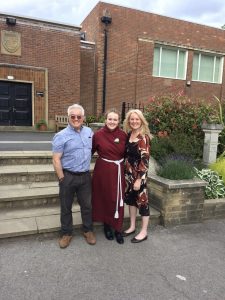 I began taking piano lessons when I was five years old and soon after, my teacher noticed I had good pitch, so offered to give me a few singing lessons to see if I enjoyed them (which I did!) 13 years later, I am still thoroughly enjoying both piano and singing, having reached up to Grade 8 standard on piano and achieving Distinction in both my Grade 8 exam and diploma in singing.
I began taking piano lessons when I was five years old and soon after, my teacher noticed I had good pitch, so offered to give me a few singing lessons to see if I enjoyed them (which I did!) 13 years later, I am still thoroughly enjoying both piano and singing, having reached up to Grade 8 standard on piano and achieving Distinction in both my Grade 8 exam and diploma in singing.
During primary school, my love for all things music grew even more, as my biggest excitement was the weekly music lessons, both in and out of school. I soon discovered my love of performing through taking part in the yearly Rotary Young Musician of the Year Competition and being involved in Stagecoach for eight years, which enabled me to take part in many productions; to name a few: Aida, Macbeth, Bugsy Malone and a Michael Jackson inspired ‘Thriller’ flash mob!
I would say that my musical journey really started to take off once high school began. It was towards the end of the summer holidays before the beginning of Year 7 that my Dad fortunately saw an advertisement in the newspaper regarding music scholarships at Harrogate Ladies’ College. As soon as I joined I fully immersed myself in all the musical opportunities that was on offer. I immediately joined Gallery Choir, which consisted of students from Year 6 to Year 9 and involved regularly performing at school events and singing works such as The Peacemakers by Jenkins in the Royal Hall, Harrogate. In order to improve my solo singing, I entered myself in both singing and piano at the annual Harrogate Music Festival.
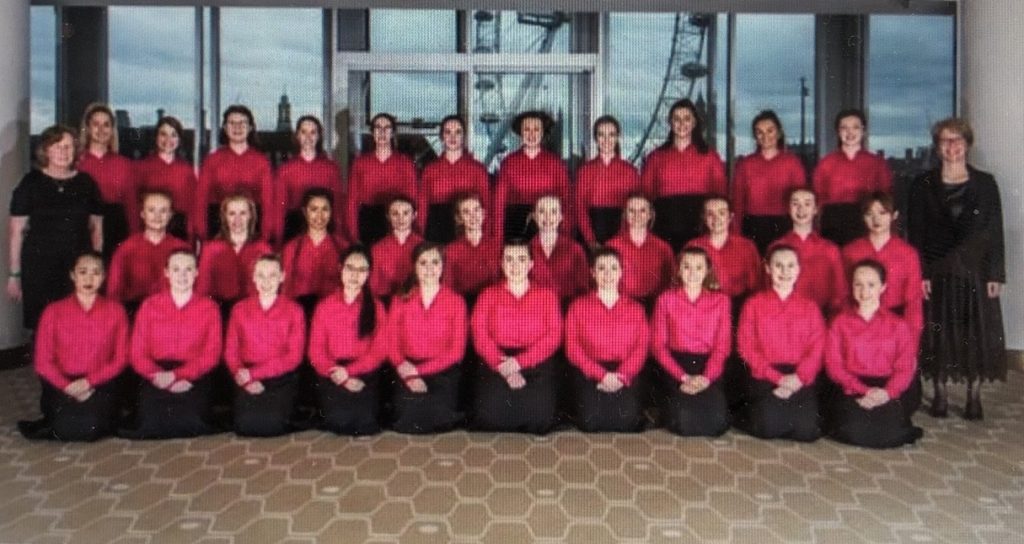
At the start of Year 9, I was accepted into my school’s prestigious Chapel Choir. The highlight of Chapel Choir for me were the biennial choir trips, including Barcelona where we sang in La Sagrada Familia and Venice where we sang Pergolesi’s Stabat Mater in St. Mark’s Basilica. Other moments I will never forget were singing live on TV in the semi-finals of BBC Songs of Praise Competition (mainly because we were all dressed in bright fuchsia pink shirts!), singing in the Royal Festival Hall in London for the Barnardo’s Choir of the Year Competition, Choral Evensongs in York Minster and Durham Cathedral, performing Britten’s challenging War Requiem in Ripon Cathedral and participating in the production of Purcell’s Dido and Aeneas.
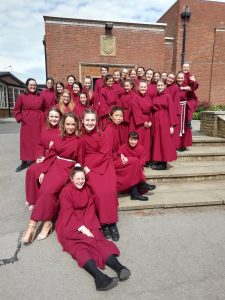 In rehearsals and certain performances, we sat in choir stalls in our school Chapel and after each year when students left, you would slowly make your way up the row to the front. It was so lovely because as I progressed further up the row, I was given more opportunities to develop my solo singing within the choir and undertake more responsibilities. This culminated in eventually me becoming Row Leader and during Year 13, I was chosen to be Head of Chapel Choir, which was and still is a position which meant so much to me. Having been a part of the choir going on five years at that point, it was such a lovely role to have to bring my time at Harrogate Ladies’ College to an end. Within this role my confidence in my own music ability grew massively. I was tasked with leading the choir during services, performances, keeping the beat during the unaccompanied morning Amen’s in Chapel (a much harder task than it originally seemed!) and regularly singing solos.
In rehearsals and certain performances, we sat in choir stalls in our school Chapel and after each year when students left, you would slowly make your way up the row to the front. It was so lovely because as I progressed further up the row, I was given more opportunities to develop my solo singing within the choir and undertake more responsibilities. This culminated in eventually me becoming Row Leader and during Year 13, I was chosen to be Head of Chapel Choir, which was and still is a position which meant so much to me. Having been a part of the choir going on five years at that point, it was such a lovely role to have to bring my time at Harrogate Ladies’ College to an end. Within this role my confidence in my own music ability grew massively. I was tasked with leading the choir during services, performances, keeping the beat during the unaccompanied morning Amen’s in Chapel (a much harder task than it originally seemed!) and regularly singing solos.

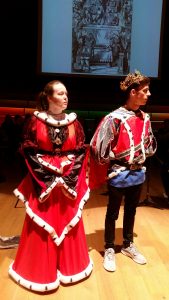 During my time so far as a Biomedical Science student at the University of Kent, all of the extra-curricular music activities has been a lovely way for me to relax away from my studies. I have been extremely lucky and grateful to be a part of the University Chorus, Chamber Choir, Cecilian Choir and a recipient of the Music Performance Scholarship. The Chamber Choir sang at the Cathedral for the Carol Service in December, and I’m currently singing the role of the Queen of Hearts for a production of Alice in Wonderland, and looking forward to singing in Canterbury Cathedral with the Chorus, Chamber Choir and at Choral Evensong with the Cecilian Choir later in the year.
During my time so far as a Biomedical Science student at the University of Kent, all of the extra-curricular music activities has been a lovely way for me to relax away from my studies. I have been extremely lucky and grateful to be a part of the University Chorus, Chamber Choir, Cecilian Choir and a recipient of the Music Performance Scholarship. The Chamber Choir sang at the Cathedral for the Carol Service in December, and I’m currently singing the role of the Queen of Hearts for a production of Alice in Wonderland, and looking forward to singing in Canterbury Cathedral with the Chorus, Chamber Choir and at Choral Evensong with the Cecilian Choir later in the year.
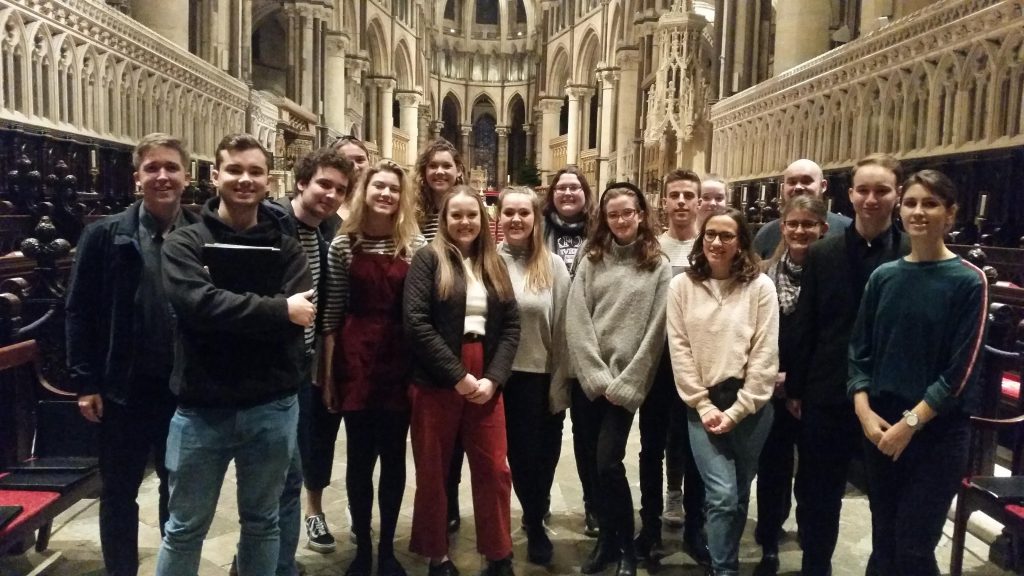


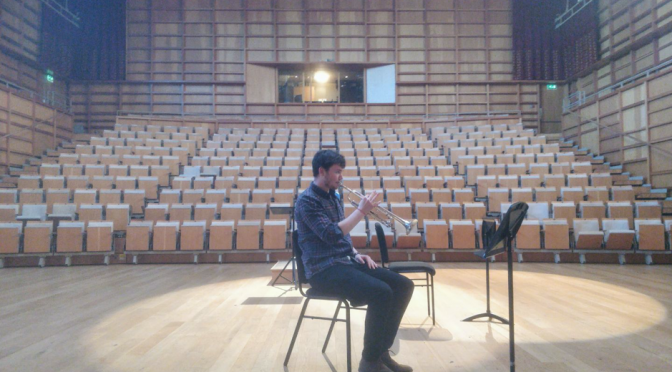
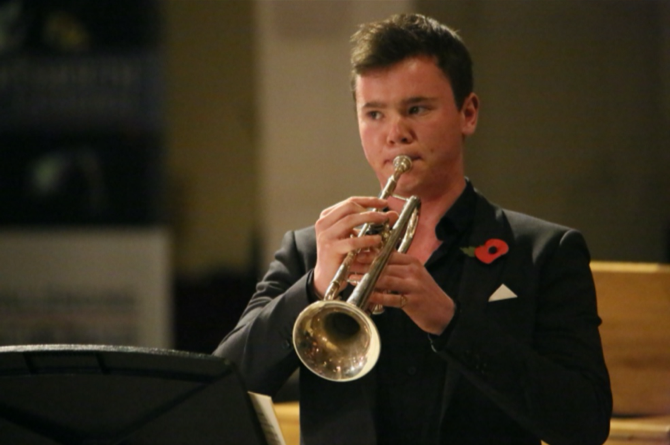 Although I predominantly play the Trumpet, I was the Soprano Cornet in my school brass band for the entirety of my time in secondary school and sixth form, which I enjoyed tremendously as the Soprano part tended to be a little more interesting than the solo cornet’s.
Although I predominantly play the Trumpet, I was the Soprano Cornet in my school brass band for the entirety of my time in secondary school and sixth form, which I enjoyed tremendously as the Soprano part tended to be a little more interesting than the solo cornet’s. I have been extremely fortunate to have had the opportunity to go on tour with my school brass band several times, to Paris, Italy, Austria, Barcelona and Prague, all of which were awesome trips (especially as I had a good group of friends there too!)
I have been extremely fortunate to have had the opportunity to go on tour with my school brass band several times, to Paris, Italy, Austria, Barcelona and Prague, all of which were awesome trips (especially as I had a good group of friends there too!)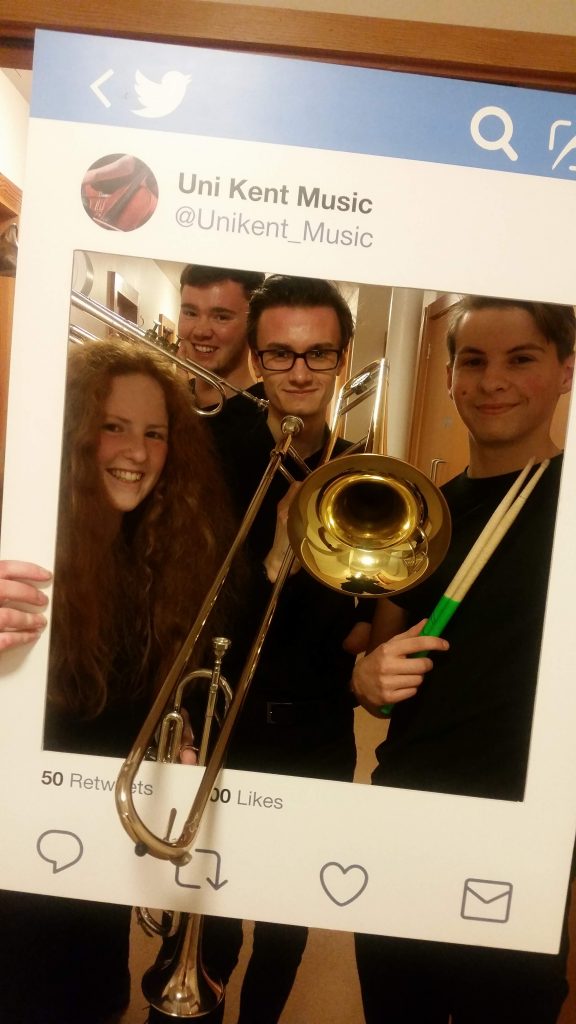 Since starting at the university, I’ve been involving myself in a number of groups: Symphony Orchestra; the Big Band; General Harding’s Tomfoolery (a 1940’s style swing band); the Concert Band; and at times dropping into a brass ensemble. Concert preparation was underway by Week Two, and before Christmas the Orchestra, Big Band and Tomfoolery group each had a concert – it was demonstrated to me quite how nice it is to perform in a space like the new(ish) concert hall.
Since starting at the university, I’ve been involving myself in a number of groups: Symphony Orchestra; the Big Band; General Harding’s Tomfoolery (a 1940’s style swing band); the Concert Band; and at times dropping into a brass ensemble. Concert preparation was underway by Week Two, and before Christmas the Orchestra, Big Band and Tomfoolery group each had a concert – it was demonstrated to me quite how nice it is to perform in a space like the new(ish) concert hall. Coming up before then end of this term is an Orchestral concert in the Cathedral (we’re playing Saint-Saens’ Organ Symphony and Durufle’s Requiem – both massive pieces which will be awesome to play in such a venue), a joint Big Band-Concert Band concert in the Colyer-Ferguson hall, and a Tomfoolery lunchtime concert – with dancers! I will also be playing in a chamber orchestra children’s concert of Peter and the Wolf; which I rather hope they’ll be resurrecting David Bowie to narrate…
Coming up before then end of this term is an Orchestral concert in the Cathedral (we’re playing Saint-Saens’ Organ Symphony and Durufle’s Requiem – both massive pieces which will be awesome to play in such a venue), a joint Big Band-Concert Band concert in the Colyer-Ferguson hall, and a Tomfoolery lunchtime concert – with dancers! I will also be playing in a chamber orchestra children’s concert of Peter and the Wolf; which I rather hope they’ll be resurrecting David Bowie to narrate…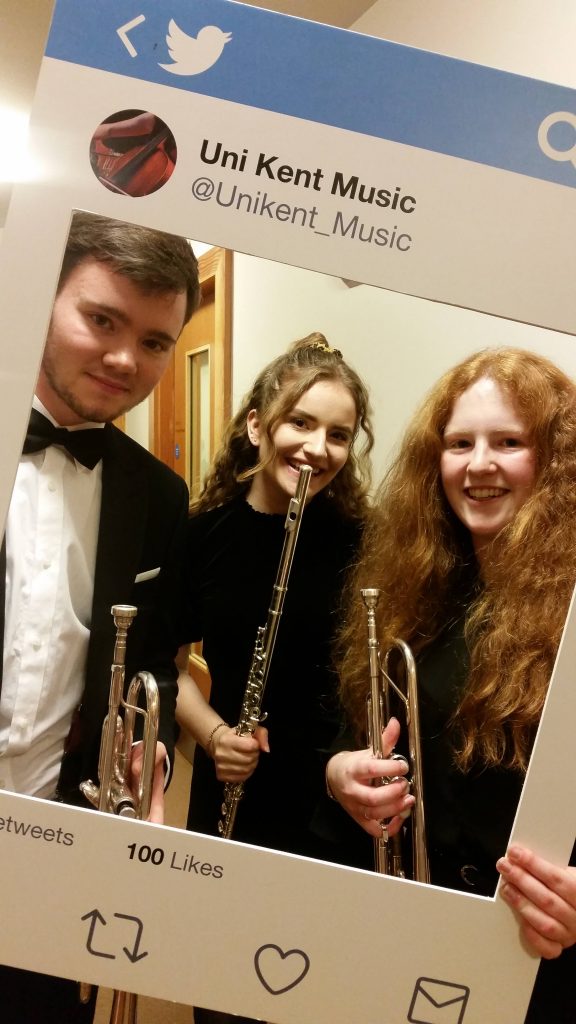
 Alongside the production, there are two art exhibitions on campus celebrating the bicentenary of Sir John Tenniel, illustrator, and cartoonist, whose illustrations graced the pages of the first publication of Alice in Wonderland in 1865. The production of the Musical Dream Play will feature many of Tenniel’s ilustrations projected above the stage during the performance, and these are currently on display in Colyer-Fergusson Gallery throughout February, allowing visitors the opportunity almost to walk through pages of the book…
Alongside the production, there are two art exhibitions on campus celebrating the bicentenary of Sir John Tenniel, illustrator, and cartoonist, whose illustrations graced the pages of the first publication of Alice in Wonderland in 1865. The production of the Musical Dream Play will feature many of Tenniel’s ilustrations projected above the stage during the performance, and these are currently on display in Colyer-Fergusson Gallery throughout February, allowing visitors the opportunity almost to walk through pages of the book…


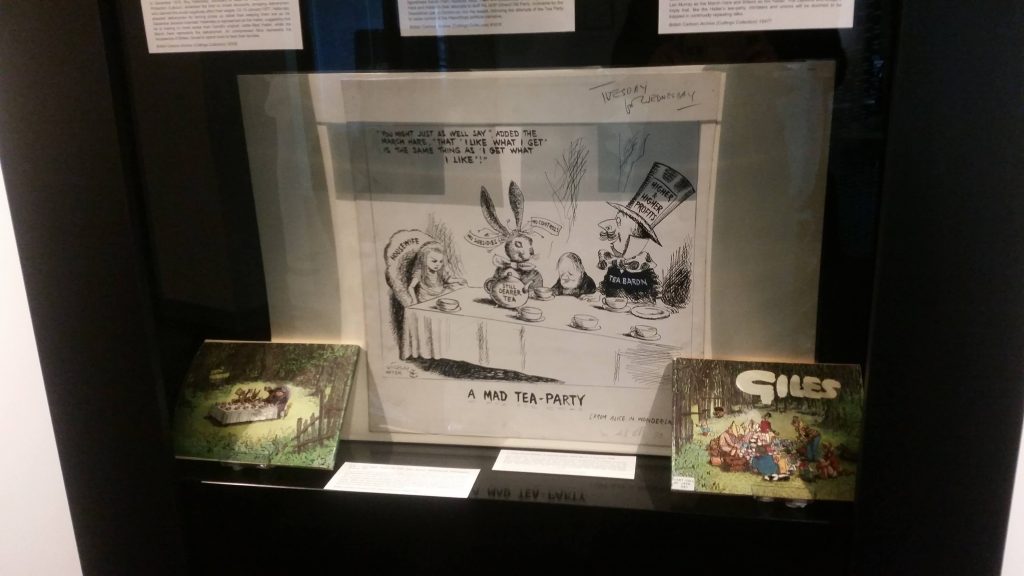
 I began taking piano lessons when I was five years old and soon after, my teacher noticed I had good pitch, so offered to give me a few singing lessons to see if I enjoyed them (which I did!) 13 years later, I am still thoroughly enjoying both piano and singing, having reached up to Grade 8 standard on piano and achieving Distinction in both my Grade 8 exam and diploma in singing.
I began taking piano lessons when I was five years old and soon after, my teacher noticed I had good pitch, so offered to give me a few singing lessons to see if I enjoyed them (which I did!) 13 years later, I am still thoroughly enjoying both piano and singing, having reached up to Grade 8 standard on piano and achieving Distinction in both my Grade 8 exam and diploma in singing.
 In rehearsals and certain performances, we sat in choir stalls in our school Chapel and after each year when students left, you would slowly make your way up the row to the front. It was so lovely because as I progressed further up the row, I was given more opportunities to develop my solo singing within the choir and undertake more responsibilities. This culminated in eventually me becoming Row Leader and during Year 13, I was chosen to be Head of Chapel Choir, which was and still is a position which meant so much to me. Having been a part of the choir going on five years at that point, it was such a lovely role to have to bring my time at Harrogate Ladies’ College to an end. Within this role my confidence in my own music ability grew massively. I was tasked with leading the choir during services, performances, keeping the beat during the unaccompanied morning Amen’s in Chapel (a much harder task than it originally seemed!) and regularly singing solos.
In rehearsals and certain performances, we sat in choir stalls in our school Chapel and after each year when students left, you would slowly make your way up the row to the front. It was so lovely because as I progressed further up the row, I was given more opportunities to develop my solo singing within the choir and undertake more responsibilities. This culminated in eventually me becoming Row Leader and during Year 13, I was chosen to be Head of Chapel Choir, which was and still is a position which meant so much to me. Having been a part of the choir going on five years at that point, it was such a lovely role to have to bring my time at Harrogate Ladies’ College to an end. Within this role my confidence in my own music ability grew massively. I was tasked with leading the choir during services, performances, keeping the beat during the unaccompanied morning Amen’s in Chapel (a much harder task than it originally seemed!) and regularly singing solos.
 During my time so far as a Biomedical Science student at the University of Kent, all of the extra-curricular music activities has been a lovely way for me to relax away from my studies. I have been extremely lucky and grateful to be a part of the University Chorus, Chamber Choir, Cecilian Choir and a recipient of the Music Performance Scholarship. The Chamber Choir sang at the Cathedral for the Carol Service in December, and I’m currently singing the role of the Queen of Hearts for a production of Alice in Wonderland, and looking forward to singing in Canterbury Cathedral with the Chorus, Chamber Choir and at Choral Evensong with the Cecilian Choir later in the year.
During my time so far as a Biomedical Science student at the University of Kent, all of the extra-curricular music activities has been a lovely way for me to relax away from my studies. I have been extremely lucky and grateful to be a part of the University Chorus, Chamber Choir, Cecilian Choir and a recipient of the Music Performance Scholarship. The Chamber Choir sang at the Cathedral for the Carol Service in December, and I’m currently singing the role of the Queen of Hearts for a production of Alice in Wonderland, and looking forward to singing in Canterbury Cathedral with the Chorus, Chamber Choir and at Choral Evensong with the Cecilian Choir later in the year.
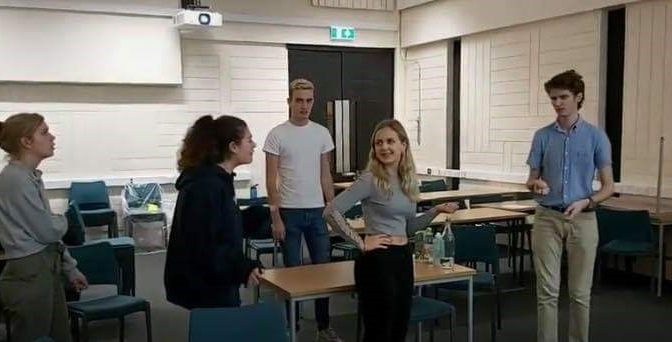

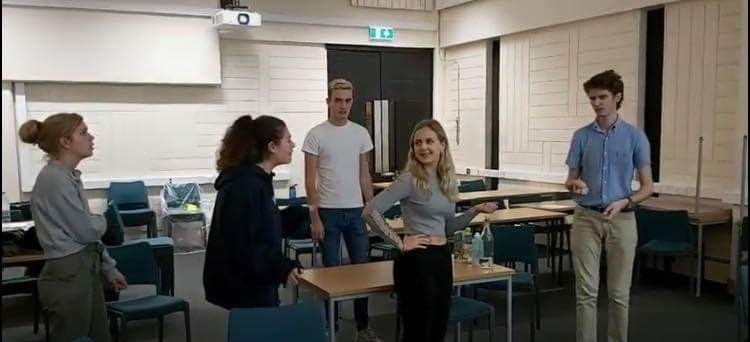
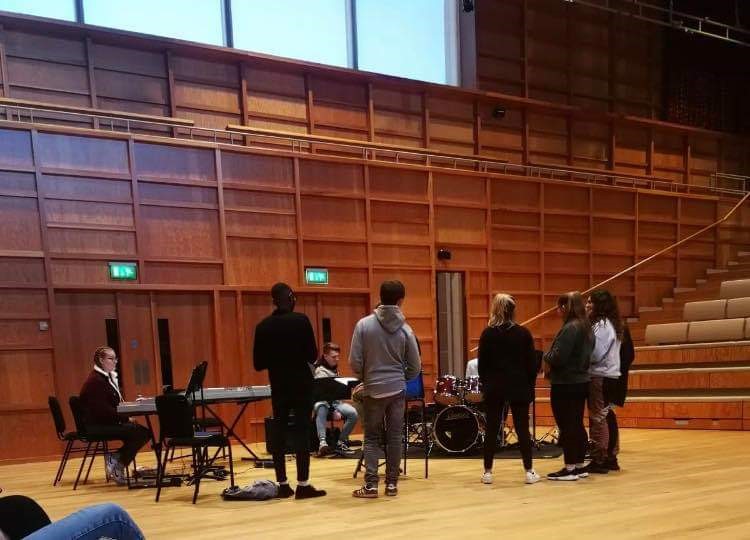
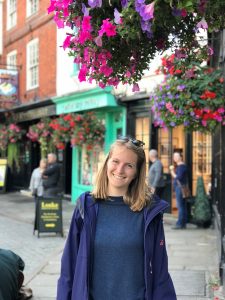 Music has always been a very important part of my life. I have been playing the recorder and the cello for 15 and 13 years respectively. In various orchestras and ensembles from Baroque to contemporary music, some of them international, I have experienced how music does not know any borders.
Music has always been a very important part of my life. I have been playing the recorder and the cello for 15 and 13 years respectively. In various orchestras and ensembles from Baroque to contemporary music, some of them international, I have experienced how music does not know any borders.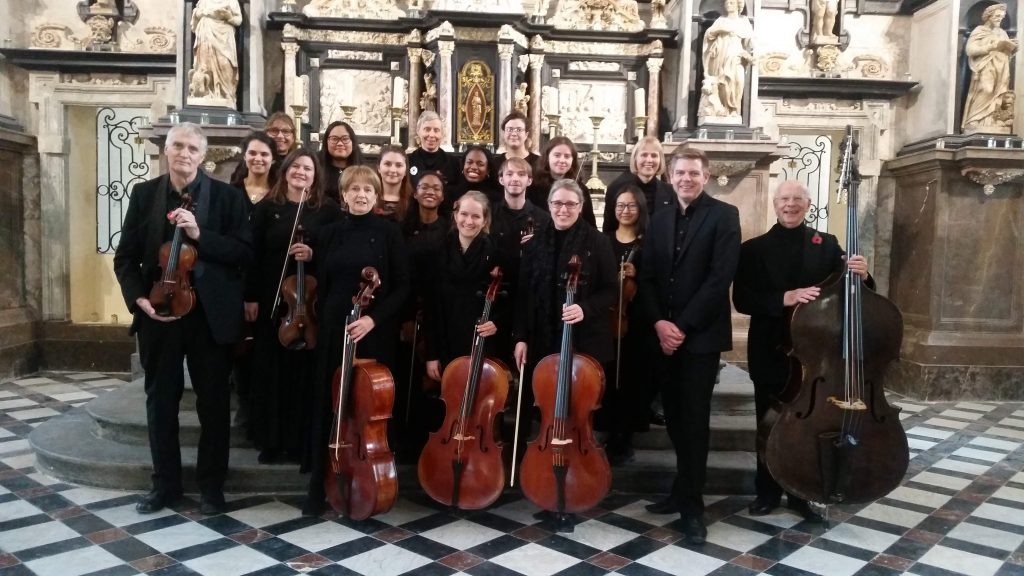
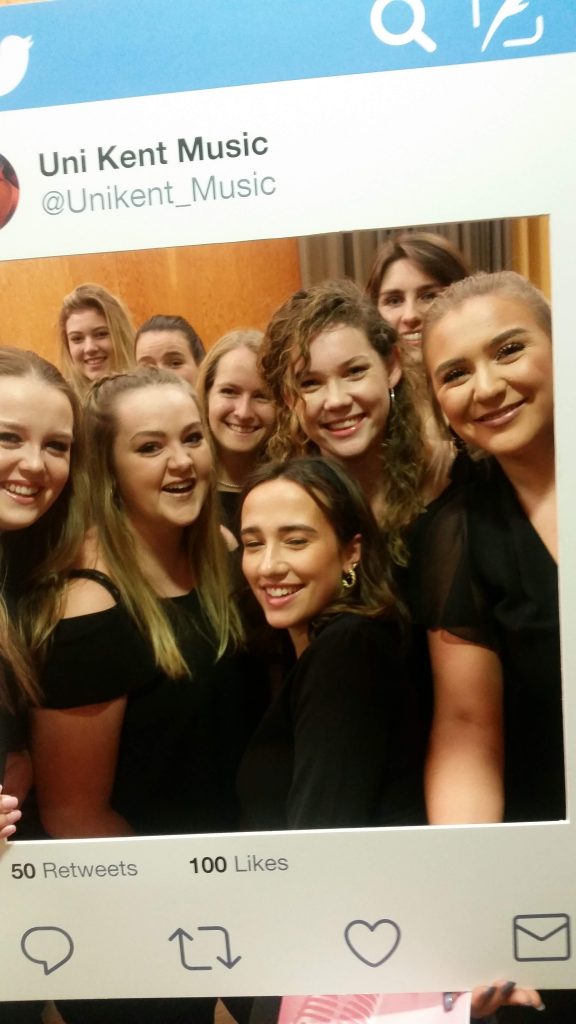 I am very excited for our next performance, the meditative Advent Breathing Space with Christmas carols and antiphons in a candlelit medieval church this Friday.
I am very excited for our next performance, the meditative Advent Breathing Space with Christmas carols and antiphons in a candlelit medieval church this Friday.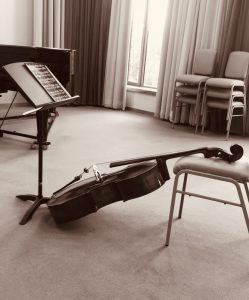 Even though you cannot study music on the University’s Canterbury campus, the Music Department offers an amazing variety of opportunities for students who want to get involved. It feels like all the different musicians and ensembles are part of one big family. I am very grateful to be part of that family.
Even though you cannot study music on the University’s Canterbury campus, the Music Department offers an amazing variety of opportunities for students who want to get involved. It feels like all the different musicians and ensembles are part of one big family. I am very grateful to be part of that family.
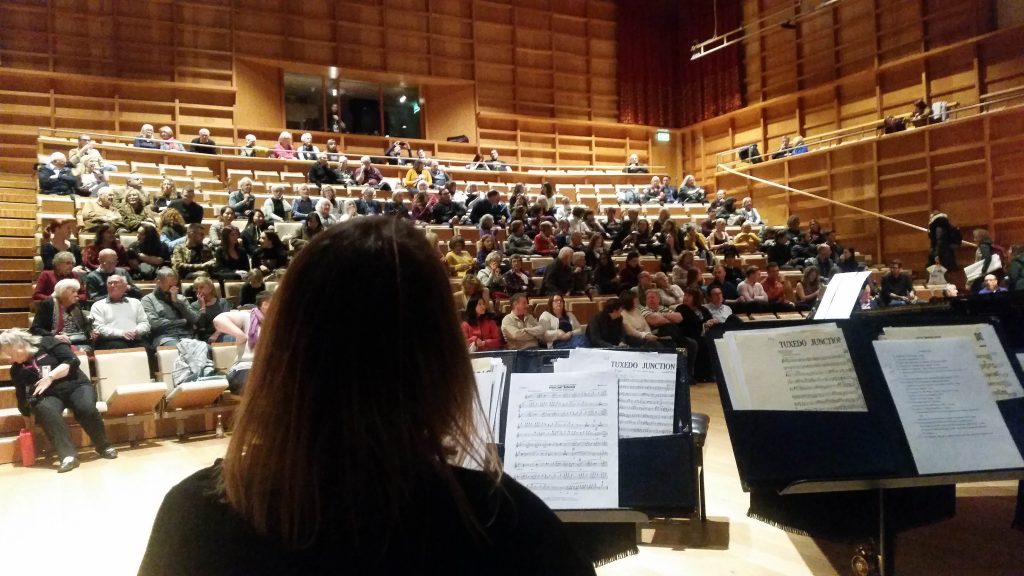

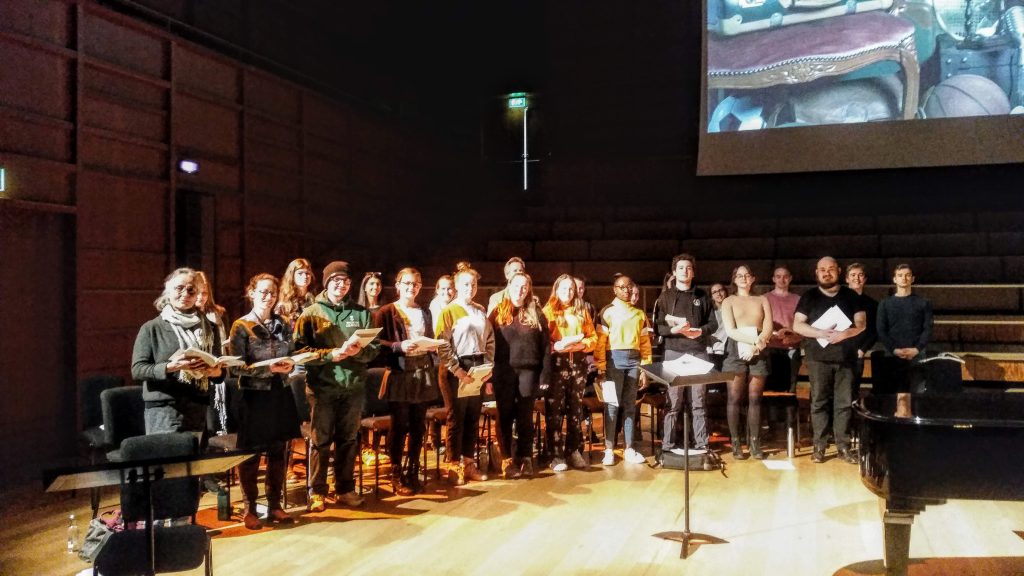
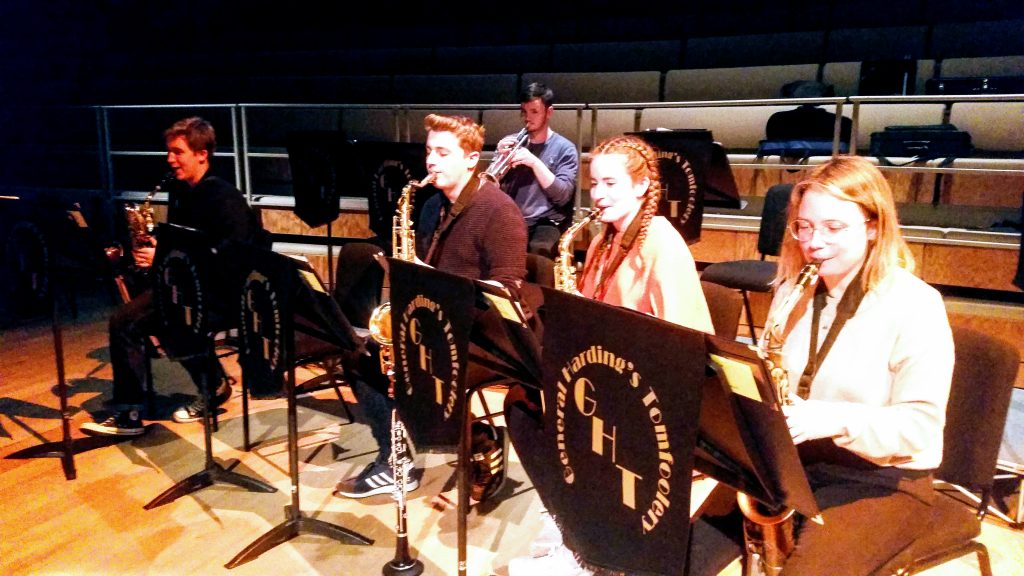
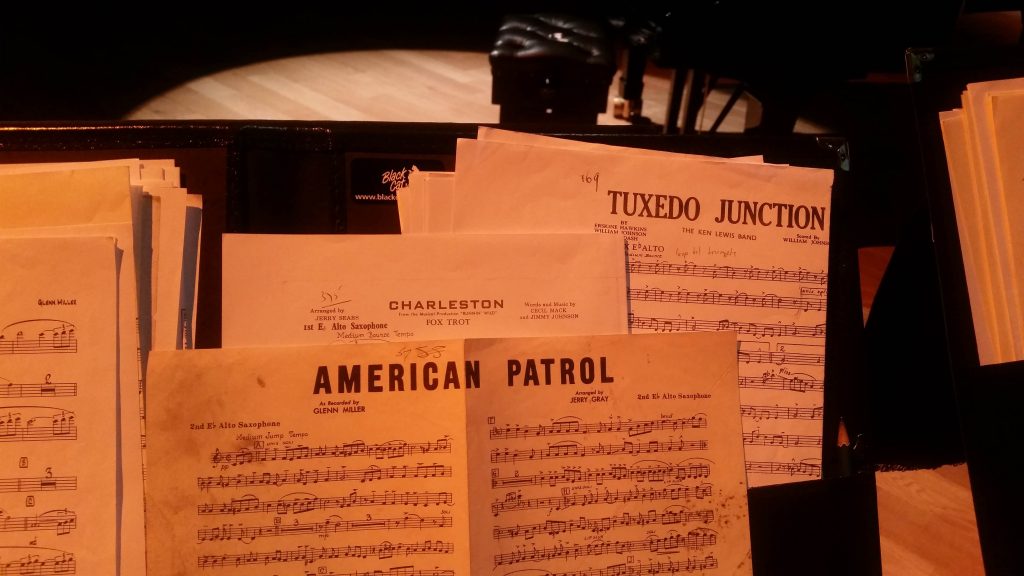
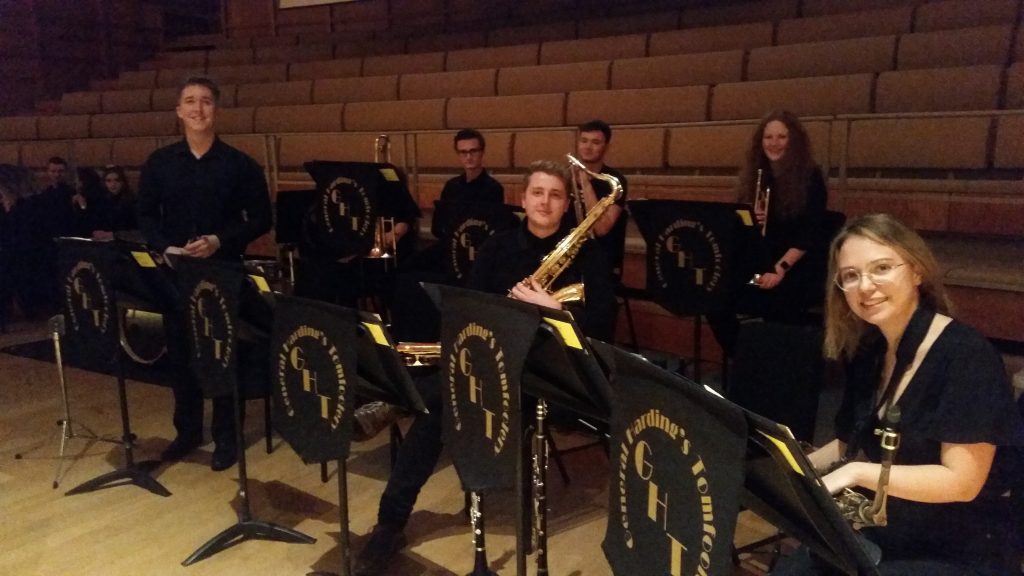 Tomfoolery also played the audience out with The Charleston and American Patrol, before performers and audience mingled in the foyer for a post-event glass of mulled wine.
Tomfoolery also played the audience out with The Charleston and American Patrol, before performers and audience mingled in the foyer for a post-event glass of mulled wine.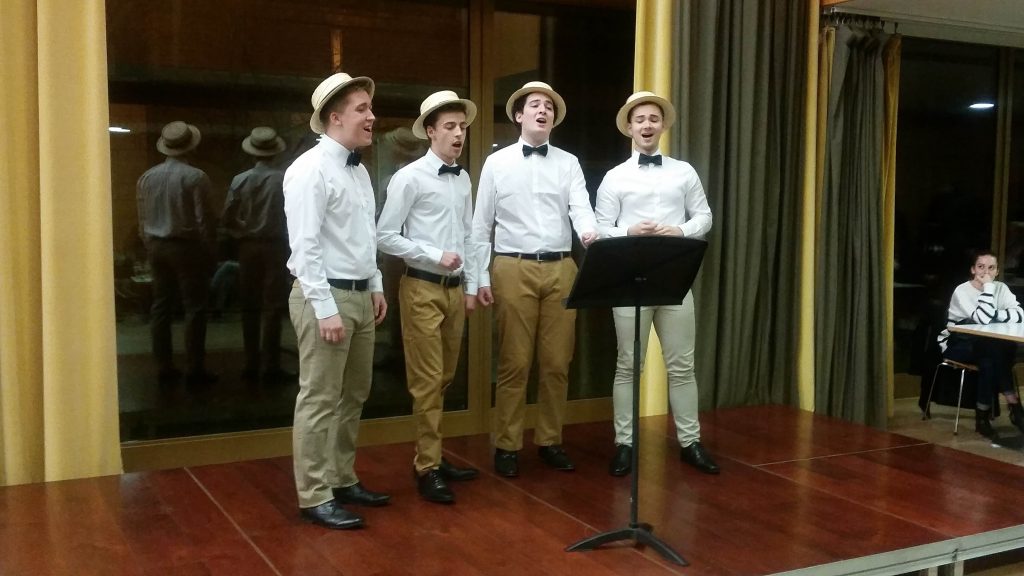 Before the event, the student barbershop quartet, the Razor Sharps, took to the foyer-stage to entertain the arriving audience with a selection of popular favourites, setting a suitable scene for a trip down Memory Lane.
Before the event, the student barbershop quartet, the Razor Sharps, took to the foyer-stage to entertain the arriving audience with a selection of popular favourites, setting a suitable scene for a trip down Memory Lane.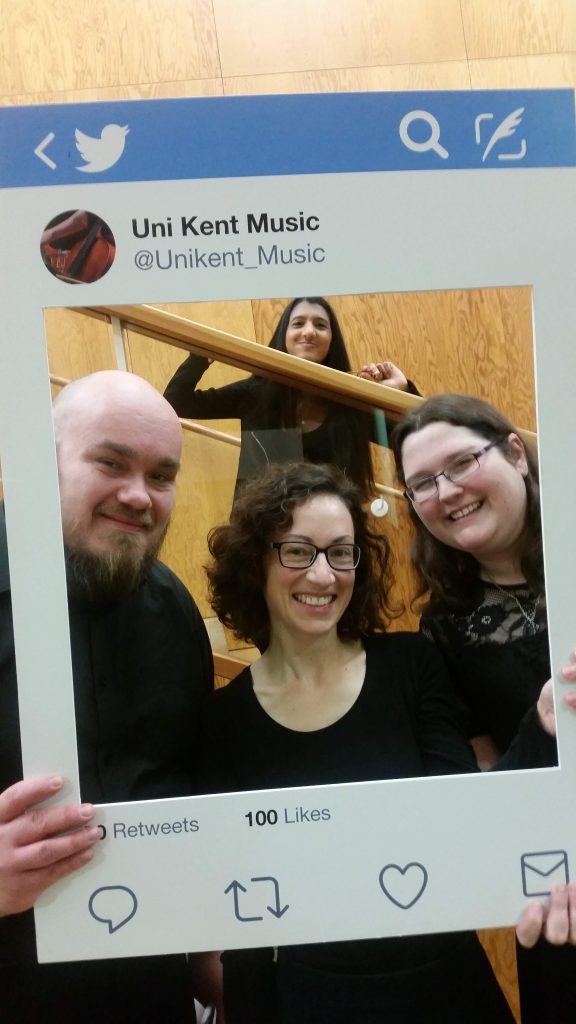
 Thanks to all those who took part; we brought fun, we brought sunshine, we brought love!
Thanks to all those who took part; we brought fun, we brought sunshine, we brought love!

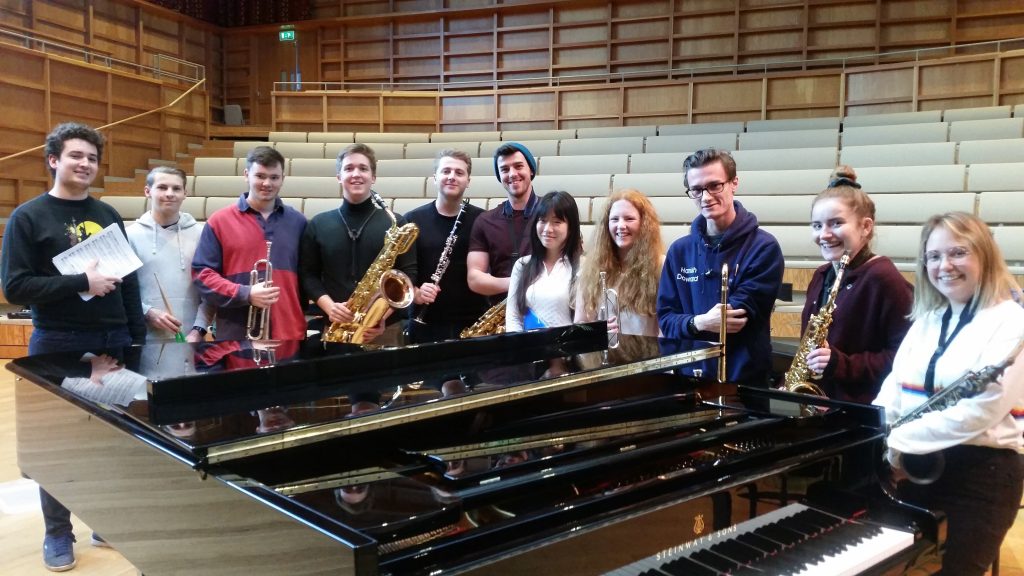
 Tickets are free (reserved in advance
Tickets are free (reserved in advance